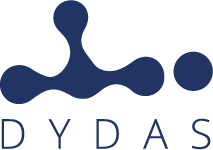L’ultima versione prodotta da AgID in merito all’aggiornamento del Piano per l’informatica nella Pubblica Amministrazione per il triennio 2021-2023, teneva conto delle disposizioni di attuazione del PNRR e della vigilanza sugli obblighi di trasformazione digitale. Nel pubblicarlo L’Agenzia ricordò che il documento è stato notificato alla Commissione Europea come passaggio aggiuntivo nell’iter di adozione del Piano rispetto alle precedenti edizioni. A conclusione della procedura, il Piano sarà infatti adottato con decreto del Presidente del Consiglio dei ministri o del Ministro delegato, come previsto dal Codice dell’Amministrazione Digitale. Il passaggio obbligato alla UE discende anche e soprattutto dall’impatto in termini di impegni economici e organizzativi richiesti alle amministrazioni pubbliche in materia di trasformazione digitale in attuazione del Piano Nazionale di Resilienza Nazionale di Ripresa e Resilienza – PNRR, cui si accompagna anche la particolare attenzione alla effettiva realizzazione delle azioni previste e sul monitoraggio dei risultati attesi. Il Piano costituisce infatti sempre di più una vera e propria guida operativa per tutte le amministrazioni. In questo senso, l’aggiornamento del Piano si è caratterizzato per l’introduzione di una serie di elementi di novità, tra i quali vanno sicuramente annoverati:
- la previsione di obiettivi e risultati attesi connessi all’attuazione del PNRR al quale il Piano triennale si collega attraverso specifici progetti come il Single Digital Gateway (SDG) e la Piattaforma Nazionale Dati (PDND). In particolare, allineando i propri obiettivi, risultati e linee di azione al PNRR, il Piano costituisce uno strumento a supporto delle amministrazioni centrali e locali nel conseguimento dei traguardi e degli obiettivi previsti dal PNRR;
- l’attenzione al tema della vigilanza: l’aggiornamento 2021-2023 del Piano si pone infatti come ponte verso l’adozione di un nuovo modello di vigilanza attiva e collaborativa coerente con il nuovo mandato istituzionale dell’Agenzia in materia di accertamento delle violazioni e sanzionatorio in riferimento agli obblighi di transizione digitale.
Inoltre vi sono in particolare 6 aree di intervento strategiche che il Piano Triennale individua per la realizzazione della effettiva trasformazione digitale del Paese:
- servizi: attraverso un miglioramento della qualità dei servizi pubblici digitali se ne favorisce l’utilizzo da parte degli utenti, siano questi cittadini, imprese o altre amministrazioni pubbliche. Occorre quindi favorire un utilizzo più consistente di soluzioni Software as a Service già esistenti; il riuso e la condivisione di software e competenze tra le diverse amministrazioni; l’adozione di modelli e strumenti validati e a disposizione di tutti; il costante monitoraggio da parte delle PA dei propri servizi online; l’incremento del livello di accessibilità dei servizi erogati tramite siti web e app mobile.
- dati: valorizzare il patrimonio informativo pubblico costituisce un obiettivo strategico per la Pubblica Amministrazione per affrontare efficacemente le nuove sfide dell’economia basata sui dati (data economy): il Piano mira proprio ad assicurare maggiore efficacia all’attività amministrativa in tutti i processi che coinvolgono l’utilizzo dei dati, sia con riferimento alla condivisione dei dati tra pubbliche amministrazioni per finalità istituzionali, sia con riferimento al riutilizzo dei dati, per finalità commerciali e non, secondo il paradigma degli open data;
- piattaforme tecnologiche: attraverso i loro strumenti consentono di ridurre il carico di lavoro delle pubbliche amministrazioni, sollevandole dalla necessità di dover realizzare ex novo funzionalità, riducendo i tempi e i costi di attuazione dei servizi, garantendo maggiore sicurezza informatica e alleggerendo la gestione dei servizi della Pubblica Amministrazione. Le piattaforme nascono per supportare la razionalizzazione dei processi di back-office o di front-end della PA e sono disegnate per interoperare in modo organico in un’ottica di ecosistema;
- infrastrutture digitali: sostengono l’erogazione sia di servizi pubblici a cittadini e imprese sia di servizi essenziali per il Paese. Tali infrastrutture devono essere affidabili, sicure, energeticamente efficienti ed economicamente sostenibili;
- interoperabilità: permette la collaborazione e l’interazione telematica tra pubbliche amministrazioni, cittadini e imprese, favorendo l’attuazione del principio once only favorendo l’aumento dell’interoperabilità tra PA e tra queste e cittadini/imprese; la qualità e la sicurezza delle soluzioni realizzate; la de-duplicazione e la co-creazione delle API;
- sicurezza informatica: sono necessarie infrastrutture tecnologiche e piattaforme in grado di offrire ai cittadini e alle imprese servizi digitali efficaci, sicuri e resilienti.
Durante la seconda metà del mese di gennaio 2023 sarà possibile seguire 2 webinar dedicati ad approfondire il tema, illustrando anche le sinergie con lo strumento digitale rappresentato dalla piattaforma DYDAS realizzata dall’omonimo progetto cofinanziato dal programma Europeo Connecting Europe Facility – CEF.
Per informazioni e aggiornamenti segui la pagina “Eventi”
Fonte principale dell’informazione: AGID
Importance of the IT Plan in the Public Administration for the three-year period 2021-2023 in Italy and dedicated DYDAS webinars
The latest version produced by AgID regarding the update of the IT Plan in the Public Administration for the three-year period 2021-2023, took into account the implementing provisions of the PNRR and the supervision of digital transformation obligations. In publishing it, the Agency recalled that the document was notified to the European Commission as an additional step in the process of adopting the Plan compared to previous editions. At the conclusion of the procedure, the Plan will in fact be adopted by decree of the President of the Council of Ministers or of the Delegated Minister, as required by the Digital Administration Code. The obligatory passage to the EU also and above all derives from the impact in terms of economic and organizational commitments required of public administrations in the field of digital transformation in implementation of the National Recovery and Resilience National Plan – PNRR, which is also accompanied by the particular attention the effective implementation of the foreseen actions and the monitoring of the expected results. In fact, the Plan increasingly constitutes a real operational guide for all administrations. In this sense, the update of the Plan was characterized by the introduction of a series of new elements, which certainly include:
- the forecast of objectives and expected results connected to the implementation of the PNRR to which the three-year plan is linked through specific projects such as the Single Digital Gateway (SDG) and the National Data Platform (PDND). In particular, by aligning its objectives, results and lines of action with the PNRR, the Plan constitutes a tool to support central and local administrations in achieving the goals and objectives set by the PNRR;
- attention to the topic of supervision: the 2021-2023 update of the Plan is in fact a bridge towards the adoption of a new model of active and collaborative supervision consistent with the new institutional mandate of the Agency on the matter of ascertaining violations and sanction with reference to the digital transition obligations.
Furthermore, there are in particular 6 strategic areas of intervention that the Three-Year Plan identifies for the realization of the effective digital transformation of the country:
- services: by improving the quality of digital public services, their use by users is encouraged, be they citizens, businesses or other public administrations. It is therefore necessary to encourage a more consistent use of existing Software as a Service solutions; the reuse and sharing of software and skills between the various administrations; the adoption of validated models and tools available to all; the constant monitoring by the PA of their online services; the increase in the level of accessibility of the services provided via websites and mobile apps.
- data: enhancing public information assets is a strategic objective for the Public Administration to effectively face the new challenges of the data-based economy: the Plan aims precisely to ensure greater effectiveness of administrative activity in all processes involving the use of data, both with reference to the sharing of data between public administrations for institutional purposes, and with reference to the reuse of data, for commercial and non-commercial purposes, according to the open data paradigm;
- Technological platforms: through their tools, they make it possible to reduce the workload of public administrations, relieving them of the need to create functions from scratch, reducing the time and costs of implementing services, guaranteeing greater IT security and lightening the management of public services Administration. The platforms were created to support the rationalization of back-office or front-end processes of the PA and are designed to interoperate organically in an ecosystem perspective;
- digital infrastructures: they support the provision of both public services to citizens and businesses and essential services for the country. Such infrastructures must be reliable, safe, energy efficient and economically viable;
interoperability: allows collaboration and telematic interaction between public administrations, citizens and businesses, favoring the implementation of the once only principle by favoring the increase of interoperability between PAs and between these and citizens/businesses; the quality and safety of the implemented solutions; de-duplication and co-creation of APIs; - IT security: technological infrastructures and platforms are needed that are able to offer citizens and businesses effective, secure and resilient digital services.
During the second half of January 2023 it will be possible to follow 2 webinars dedicated to deepening the topic, also illustrating the synergies with the digital tool represented by DYDAS Platform created by the homonymous project co-financed by the European program Connecting Europe Facility – CEF.
For information and updates, follow the “Events” page
Main source of information: AGID


